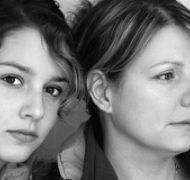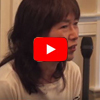What Peels Life Back
Blog / Produced by The High Calling
On the way to her tonsillectomy, we laugh, she and I, talk of what flavor of ice cream she’d most like afterwards, when it’s all finished and she’s home, what books I might read aloud to her, and when it’d be best to pull up the old quilts and watch the screen version of Anne of Green Gables.
I tell her that with us living in a house with green clapboard siding, under two gothic gables, that makes me, too, an Anne of Green Gables, and I wink and she laughs—crazy thought, me, her mother, too old.
Afterwards, when she is wheeled out of post-op and into hospital ward, the same one where I filled out pre-admit papers for her birth ten long years ago, she stirs, long and willowy now. She winces, slowly licks raspberry Popsicle, and I read to her, stroke her hair, hold the bedpan as she greens.
I hold her arm on the way to the parking lot, and she leans. I leave a bell by her bedside that first night, by the bouquet of flowers, stroke her arm and tell her to ring for me if she needs me. And then, come the black, I cradle the length of her when she cries soundlessly through every searing swallow. When we curl up to watch Anne of Green Gables and Matthew convinces Anne to stay, she can’t talk but leans hard against my shoulder, smiles, and I squeeze her hand.
Strange, for we had fallen into this space of her tall and me distant, and we never rocked anymore, like when she was fresh and the nights flamed divine, the two of us curled.
Some days the space between stretches, elastic, and I wonder how to get back. Hard shells wrap around normal time.
“Isolation, a sense of lack of profound contact with other human beings, seems to be the disease of our time,” offers Allan Bloom.
Yet after a week of ice cream and read alouds under old patchwork, parent and child, old, we bond, skin to skin, and I grow young and tender. I begin to feel it, a feeling I had thought forever gone.
I had thought that after the honeymoon ended, the babymoons faded, the hope of that vulnerability and sacred time was gone.
“Mama? You rub my back?” She rasps in the dark and I find her.
The carapace snaps, and I crack open.
And this is what I rub up against: that it’s not actually the babe or first love that enlivens the deadened. It’s this, this human act of touching. I touch this girl of mine, child gone too long, and I trace it down: I am most alive when touching another one who is alive.
Our skins touch, currents shooting through, and the black void where a heart beats, the cavity of aloneness is bridged, arched by skin. And on the underside of me, I feel along and discover that hallowed time, that time of soul transparency, when the moments flow sacred and your heart no longer pounds but whispers, is always possible. Because touch is always possible. It’s that inversion that happens when you fall in love, when you hold your babe: Touch is what peels life back to the heart’s soft skin. Too long I’ve been gone. Why does time pry us apart?
She rolls my way and I caress her cheek and her hoarse whisper falls softly.
“Thanks, Mama. Felt good.”
Image by Rachel Gardner. Image used with permission via Flickr. This article is adapted from a post originally titled "Kindreds: How to Heal a Family," by Ann Voskamp, author of One Thousand Gifts: A Dare to Live Fully Right Where You Are.





